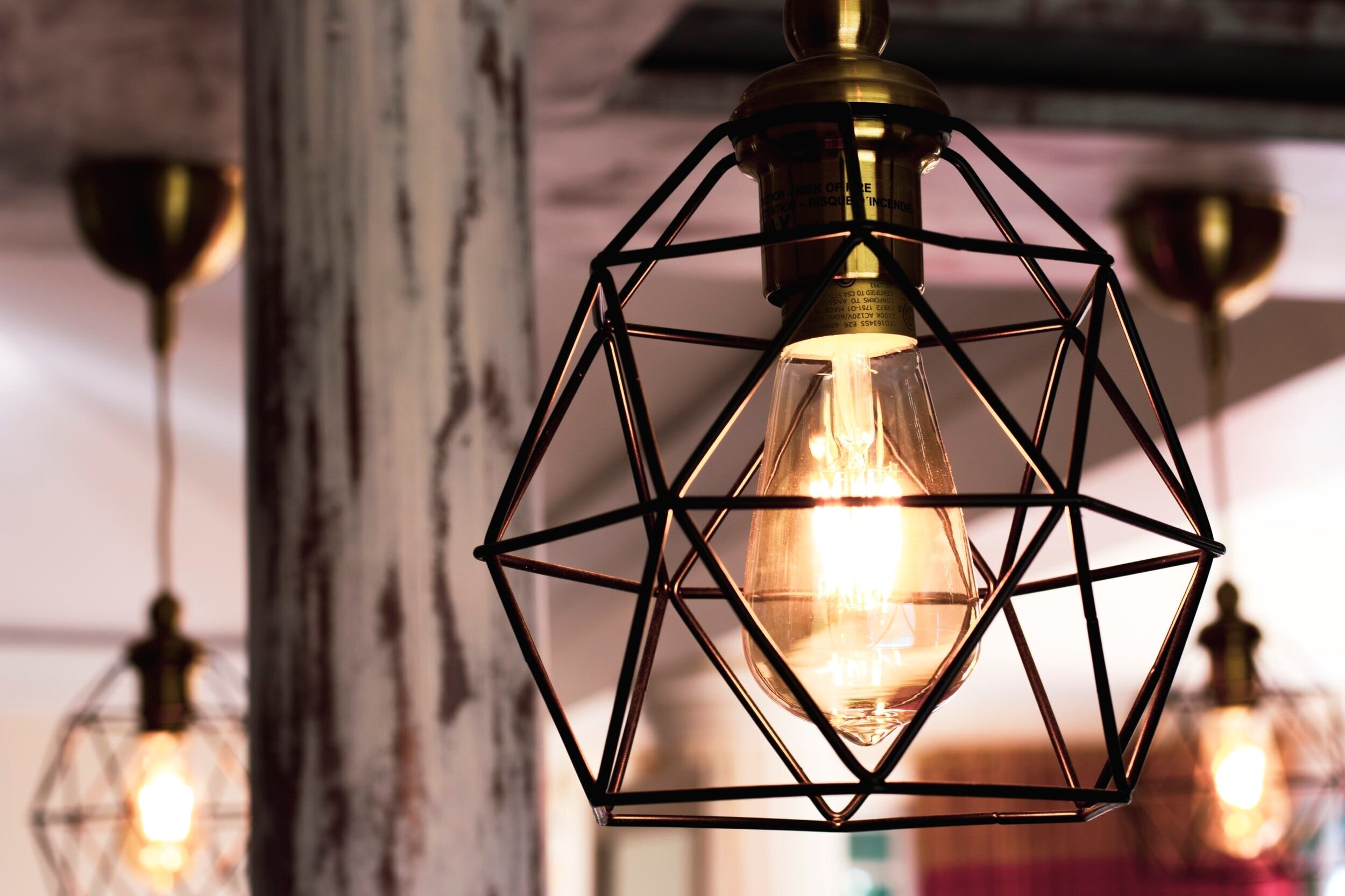Lighting 101: How Much Lighting Do I Need In My Room?
You have a pretty chandelier. Yeah it's pretty, but you know damn well that it just isn't enough. Your room needs more lighting, but you don't know just how much more you need or even what kind of lighting you should get. What you need is a crash course on Lighting 101. I got you!
There's so much to choose from out there from floor lamps, table lamp, wall sconce, candles, to spot lights and all of these choices have left you even more confused and so you've stayed stuck with your itty bitty chandelier.
I'm here to help you get unstuck and school you lighting for your room. Let's get started...
Generally speaking, I say you should have a minimum of 4 lighting fixtures in a room that's about 150 square feet. Of course if your room is smaller, then by all means cut that number down.
If you want to get all specific and and OCD, there's a formula that some Interior Designers swear by and it's up to you if you want to follow it. I'm not the follow the rules type of chic, but if you are, then here it is:
Room Length x Room Width x 1.5 = Amount of watts needed to light up your room
Now I usually use the "whatever feels right" method instead. In other words, I just let the room speak to me. Call me crazy, but it works for me.
So moving on… There are three types of lighting that are used to create lighting in a room.
Lighting 101: General Lighting aka Overhead Lighting
This is your main source of lightning like a chandelier, recessed lights (those suckers that look like they are peeking out from the ceiling) or track lights, which are awesome for adjusting the direction of where you want your lights to shine (used to put the spotlight on a focal wall or artwork).
Lighting 101: Task Lighting
This is your lighting for illuminating any areas where you will be performing any tasks like reading, working in your home office, cooking, etc. Some examples of task lighting can be a desk lamp or better yet a task lamp with a movable arm/head that you can adjust to focus on a task.
Wall sconces work great in the bedroom for you night owl readers. You can mount them near your headboard for an easy reach. They work wonders in a small room since they don't take up any floor space.
Under cabinet lights in your kitchen help a bunch when you are preparing your meals.
Lighting 101: Accent Lighting
These are used to create an ambiance or mood in your room.
Some examples are a fireplace, picture lights for highlighting a nice piece of artwork, candles, uplights to highlight a sculpture or plant in your room or spotlights to highlight objects on your bookcase.
Lighting 101: Types of Lighting
Now that we've covered that, you might be wondering on the type of lighting your room needs.
To figure that out, you'll need to decide on what activities if any, you will be doing in your room. Then you need to figure out the mood that you want to create in your room (casual, cozy, bright, soft, etc).
Let's say that you want to add some lighting in your living room (aka a lighting scheme) and you've decided that you will have a reading corner in there somewhere. Well you can use a chandelier for your general lighting, a table lamp next to your reading chair and maybe some candlelights and a floor lamp to create a soft mood in your room.
There you have it!
Take one of these tips and make your room brighter so that it can feel bigger and lift your mood.
If you’re ready to move forward with decorating your space, but need one on one, keepin’ it real help, hit me up here.




